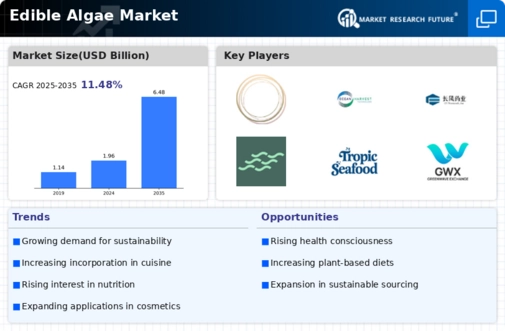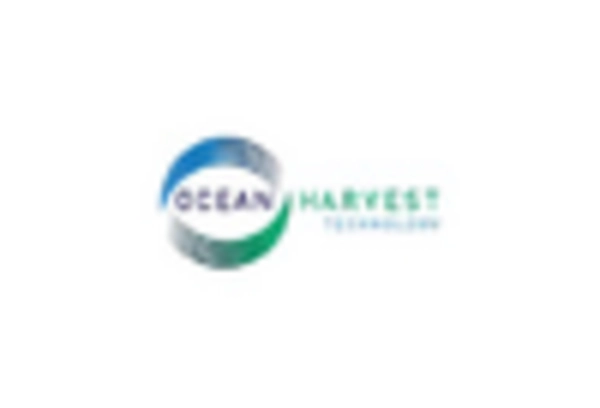Rising Vegan and Vegetarian Trends
The Edible Algae Market is benefiting from the increasing popularity of vegan and vegetarian diets. As more consumers adopt plant-based lifestyles, the demand for alternative protein sources has intensified. Edible algae, particularly spirulina and seaweeds, are being recognized as viable protein sources that align with these dietary preferences. Market Research Future indicates that the plant-based food market is expected to grow significantly, with algae products playing a crucial role in this expansion. This shift towards plant-based eating habits is likely to bolster the Edible Algae Market, as consumers seek nutritious and sustainable food options.
Nutritional Benefits of Edible Algae
The Edible Algae Market is experiencing a surge in demand due to the recognized nutritional benefits of algae. Rich in vitamins, minerals, and essential fatty acids, edible algae are increasingly viewed as a superfood. For instance, spirulina and chlorella are known for their high protein content and antioxidant properties. As consumers become more health-conscious, the incorporation of these algae into diets is likely to rise. Market data indicates that the global market for spirulina alone is projected to reach approximately 1.5 billion USD by 2025. This trend suggests that the Edible Algae Market is poised for substantial growth as more individuals seek natural sources of nutrition.
Sustainability and Environmental Awareness
The Edible Algae Market is gaining traction due to heightened awareness of sustainability and environmental issues. Algae cultivation is considered environmentally friendly, requiring less land and water compared to traditional crops. Furthermore, algae can absorb carbon dioxide, contributing to climate change mitigation. As consumers become more environmentally conscious, they are increasingly inclined to choose products that align with their values. This trend is reflected in the growing market for sustainable food products, with edible algae positioned as a key player. The Edible Algae Market is likely to thrive as sustainability becomes a priority for consumers.
Government Support and Regulatory Frameworks
The Edible Algae Market is likely to benefit from increasing government support and favorable regulatory frameworks. Many governments are recognizing the potential of algae as a sustainable food source and are implementing policies to promote its cultivation and consumption. This support may include funding for research and development, as well as initiatives to educate consumers about the benefits of edible algae. As regulatory barriers are lowered, the Edible Algae Market is expected to expand, providing opportunities for new entrants and established companies alike. This supportive environment could significantly enhance the growth trajectory of the industry.
Innovative Applications in Food and Beverage
The Edible Algae Market is witnessing innovation in product development, particularly in the food and beverage sector. Companies are exploring new ways to incorporate algae into various products, from snacks to beverages. For example, algae-based smoothies and energy bars are gaining popularity among health-conscious consumers. This innovation is not only expanding the product range but also attracting a broader audience. Market data suggests that the demand for algae-based food products is on the rise, with projections indicating a compound annual growth rate of over 10% in the coming years. This trend indicates a promising future for the Edible Algae Market.


















Leave a Comment